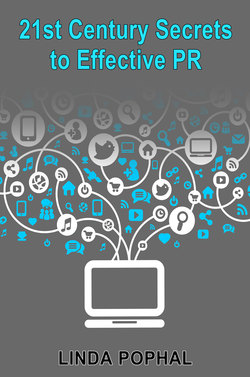Читать книгу 21st Century Secrets to Effective PR - Linda Pophal - Страница 7
На сайте Литреса книга снята с продажи.
How Social Media is Changing Advertising and PR
ОглавлениеIn the “old days,” there was advertising and there was PR. Advertising was paid communication that we created about ourselves. PR was communication that we earned through creating relationships and clever pitches to the media gatekeepers who would then share information about us on our behalf. Social media represents a new communication option that has had, and will continue to have, a marked impact on both advertising and PR.
Advertising is expensive. It costs a lot to get our messages out in a way that will be meaningful and impactful, especially given the cluttered media market. To stand out, we have to be bigger, bolder and in front of people more often than all of the other messages — not just our competitors’ message, but all other messages. That can be tough and costly.
PR, while not paid media, is still expensive. It’s time consuming. And we lack control over when, if, or how our messages will be conveyed (although in a media environment where newsrooms are increasingly short-staffed, it’s more likely that our releases and contributed content will be picked up than in the past).
Social media is the next evolution of PR. It lies somewhere in between. Unlike advertising, it’s not paid. Unlike PR, it’s not someone speaking on our behalf. Social media is us, and others, talking about us, in forums where we may or may not have control. And that’s where the evolution begins. When social media works well, it is affected by input and spread by others. Our initially controlled message is responded to, forwarded, appended and carried away into cyberspace where it can develop a life of its own.
Because of social media, traditional advertising is becoming less important to many organizations, while PR is increasing in importance. Yet how we practice PR is changing. With the growing popularity of social media, the “work” of public relations is far different from what it used to be. Traditional news releases are arguably becoming, if not outmoded, at best “different” in use and purpose. We now have the ability to research and reach out to media around the globe in an instant and the ability to research (i.e., “spy on”) media outlets, reporters, sources, etc. Not to mention a much greater ability to monitor and measure results.
Even if your target audience for a media message is not on social media (which may still be the case in some situations, according to Pew Research), social media is changing the way PR people connect with the media, the way the media connect with its audiences and, increasingly, the way we all work.
Because advertising can be expensive, and because social media opens up new opportunities for us to get our communications out to our audiences, traditional advertising is likely to continue to pale in comparison to other options.
But, because consumers still need and, arguably, will increasingly need some sense of assurance that the information they consume is credible, PR will continue to play an important role for communicators. Social media will serve as a tool both to convey our messages directly to our consumer audiences and to affect and influence the traditional media gatekeepers.
